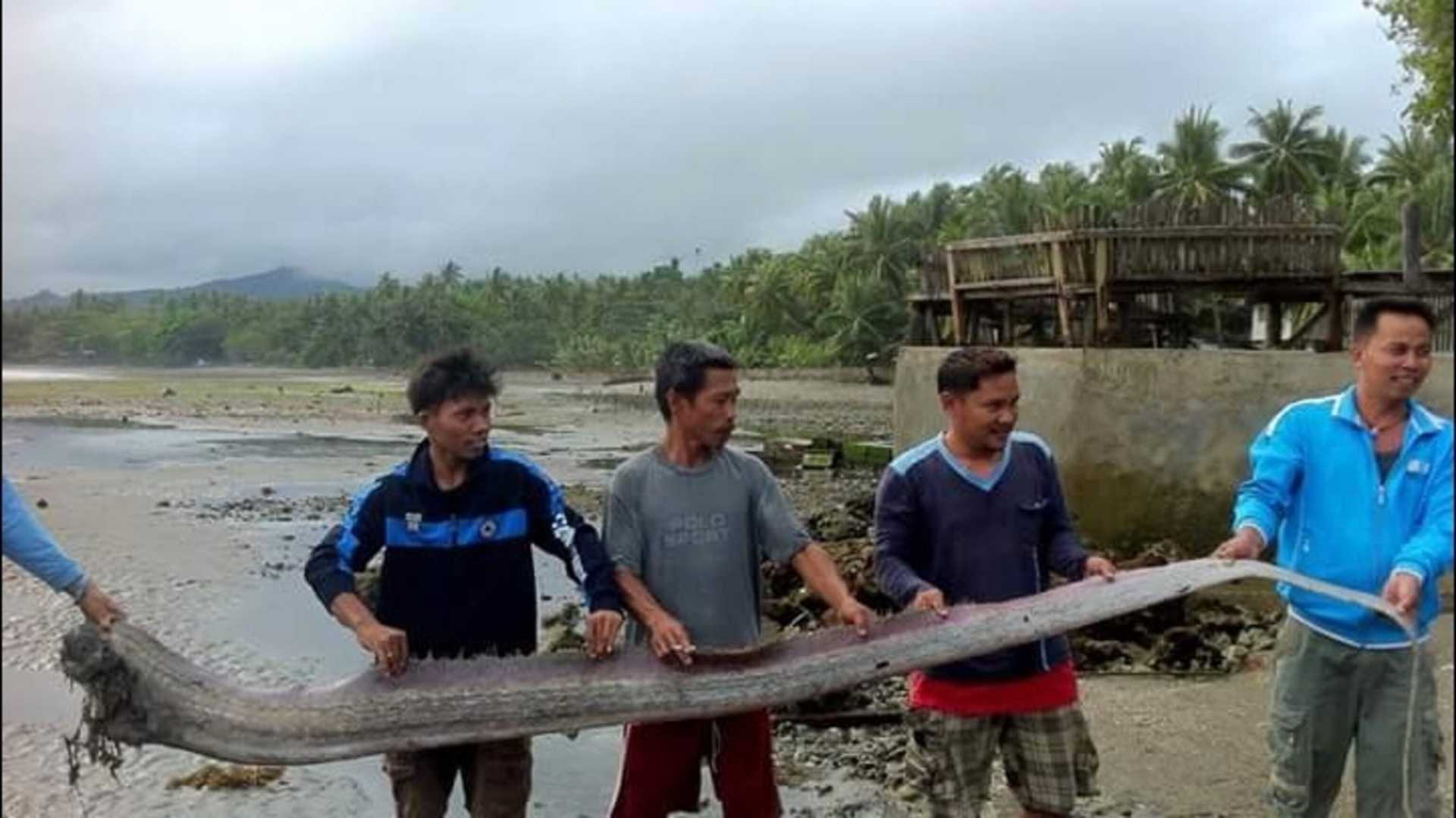News
Oarfish Sightings Spark Earthquake Fears in the Philippines

MANILA, Philippines — Social media claims of an impending 8.2 magnitude earthquake have emerged, spurred by recent sightings of the oarfish, also known as the ‘doomsday fish.’ Posts circulating online attribute the fish’s appearance to supernatural warnings of catastrophic events. The phenomenon raises concerns for both the public and scientists.
The claims began circulating within religious Facebook groups, notably through a post by ‘Walang Hanggang Kanlungan,’ which amassed substantial engagement—over 12,000 reactions, 3,700 comments, and 1,000 shares. The accompanying text warned users to prepare for a looming disaster, saying: ‘Maging alerto! Isang lindol na may lakas na 8.2 ba ang malapit nang tumama?’ (Be alert! Is a magnitude 8.2 earthquake about to strike?)
Another post by ‘Bibliya Tagalog,’ published on April 9, attracted even more attention, with an estimated 34,000 reactions and 7,000 comments. The text posed a similar alarm: ‘Lumitaw ang doomsday fish [sa] kailaliman ng dagat sa Pilipinas’ (Doomsday fish surfaced from the depths of the Philippine sea). The narrative prompts viewers to consider divine warnings of disaster.
Historically, oarfish have been associated with natural disasters in various cultures. In the Philippines, they are considered omens of earthquakes and tsunamis. However, expert analyses conclude that there is no scientific evidence supporting a correlation between oarfish appearances and seismic activity.
Research studies, including one that assessed the timing of deep-sea fish sightings relative to earthquakes, found minimal evidence of such connections. Folklore surrounding the oarfish is often viewed as superstition rather than a reliable predictor of natural events.
In natural habitats, oarfish tend to appear at depths ranging from 656 to 3,280 feet, typically surfacing due to injury or illness. Experts suggest that sightings could indicate ecosystem stress rather than a prelude to disasters.
Despite the social media frenzy, scientific communities remain steadfast: there are no methods to predict earthquakes with precision. They urge the public not to panic based on such claims.
Adding a layer of complexity to the situation, many of the videos promoting these sightings have been flagged as AI-generated content. Tools used by fact-checkers found that various posts, including one from ‘Bible Time,’ displayed a 99% probability of being AI-created. Another video from ‘Walang Hanggang Kanlungan’ was flagged as 84% likely to be AI-generated, demonstrating a growing trend of misinformation spread via sophisticated technologies.
Oarfish, particularly the Regalecus glesne species, are notable for their ribbon-like bodies that can measure up to 36 feet. Their occasional emergence onto shorelines has led to superstitions around their presence, tying them into local lore as harbingers of doom.
The conversation surrounding these oarfish sightings exemplifies the ongoing challenges posed by social media in disseminating information, underscoring the importance of critical engagement with content online. As this trend continues, experts call for vigilance among internet users to distinguish fact from fiction, emphasizing the need for robust fact-checking.












